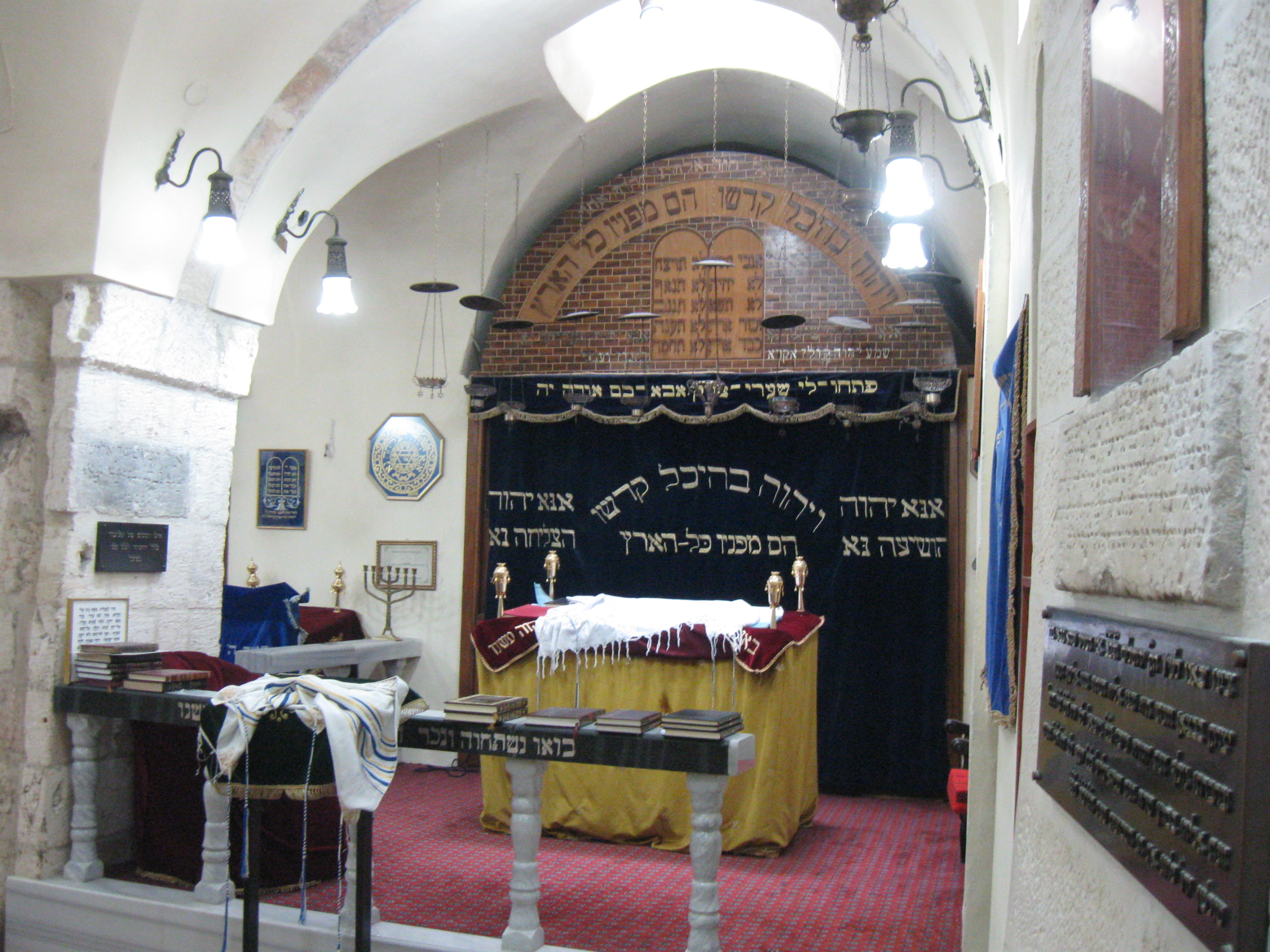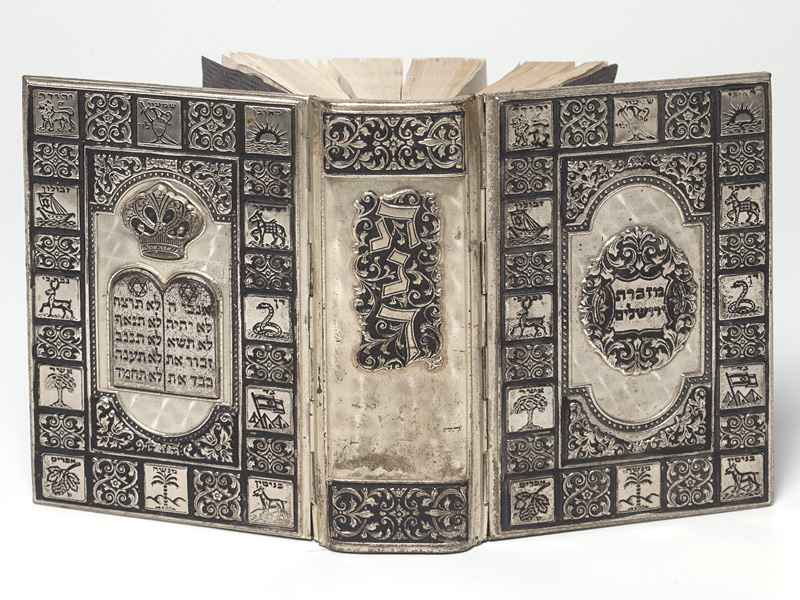|
Masoretes
The Masoretes ( he, בַּעֲלֵי הַמָּסוֹרָה, Baʿălēy Hammāsōrā, lit. 'Masters of the Tradition') were groups of Jewish scribe-scholars who worked from around the end of the 5th through 10th centuries CE, based primarily in medieval Palestine (Jund Filastin) in the cities of Tiberias and Jerusalem, as well as in Iraq ( Babylonia). Each group compiled a system of pronunciation and grammatical guides in the form of diacritical notes (''niqqud'') on the external form of the biblical text in an attempt to standardize the pronunciation, paragraph and verse divisions, and cantillation of the Hebrew Bible (the Tanakh) for the worldwide Jewish community. The ben Asher family of Masoretes was largely responsible for the preservation and production of the Masoretic Text, although there existed an alternative Masoretic text of the ben Naphtali Masoretes, which has around 875 differences from the ben Asher text. The halakhic authority Maimonides endorsed the ben Asher ... [...More Info...] [...Related Items...] OR: [Wikipedia] [Google] [Baidu] |
Masoretic Text
The Masoretic Text (MT or 𝕸; he, נֻסָּח הַמָּסוֹרָה, Nūssāḥ Hammāsōrā, lit. 'Text of the Tradition') is the authoritative Hebrew and Aramaic text of the 24 books of the Hebrew Bible (Tanakh) in Rabbinic Judaism. The Masoretic Text defines the Jewish canon and its precise letter-text, with its vocalization and accentuation known as the ''mas'sora''. Referring to the Masoretic Text, ''mesorah'' specifically means the diacritic markings of the text of the Hebrew scriptures and the concise marginal notes in manuscripts (and later printings) of the Tanakh which note textual details, usually about the precise spelling of words. It was primarily copied, edited and distributed by a group of Jews known as the Masoretes between the 7th and 10th centuries of the Common Era (CE). The oldest known complete copy, the Leningrad Codex, dates from the early 11th century CE. The differences attested to in the Dead Sea Scrolls indicate that multiple versions ... [...More Info...] [...Related Items...] OR: [Wikipedia] [Google] [Baidu] |
Hebrew Grammar
Hebrew (; ; ) is a Northwest Semitic language of the Afroasiatic language family. Historically, it is one of the spoken languages of the Israelites and their longest-surviving descendants, the Jews and Samaritans. It was largely preserved throughout history as the main liturgical language of Judaism (since the Second Temple period) and Samaritanism. Hebrew is the only Canaanite language still spoken today, and serves as the only truly successful example of a dead language that has been revived. It is also one of only two Northwest Semitic languages still in use, with the other being Aramaic. The earliest examples of written Paleo-Hebrew date back to the 10th century BCE. Nearly all of the Hebrew Bible is written in Biblical Hebrew, with much of its present form in the dialect that scholars believe flourished around the 6th century BCE, during the time of the Babylonian captivity. For this reason, Hebrew has been referred to by Jews as ''Lashon Hakodesh'' (, ) since ancient ... [...More Info...] [...Related Items...] OR: [Wikipedia] [Google] [Baidu] |
Ben Naphtali
Ben Naphtali ( Hebrew: אַבּוּ עִמְרָן מֹשֶׁה בֶּן דָּוִד בֶּן נַפְתָּלִי; Tiberian Hebrew: ''ʾAbbū ʿĪmrān, Mōše ben Dāwīḏ ben Nap̄tālī'') was a rabbi and Masorete who flourished around 890-940 CE, probably in Tiberias. Of his life little is known. His first name is in dispute. Some medieval authorities called him "Jacob"; two Chufut-Kale manuscripts have "Moses b. David"; a third contains his epigraph, which is incomplete, only "ben David ben Naphtali" remaining. His name is most likely Abu Imran, Moshe ben David ben Naphtali as preserved in Mishael ben Uzziel's 11th century treatise and in the Geniza fragment T-S K27.36 in the University Library at Cambridge. Ben Naphtali and Ben Asher Ben Naphtali wrote a Bible with vowels, accents, and Masorah, which differed in some respects from that of his contemporary and rival, Aaron ben Moses ben Asher (generally called Ben Asher). This Bible codex has not been preserved, but th ... [...More Info...] [...Related Items...] OR: [Wikipedia] [Google] [Baidu] |
Hebrew Bible
The Hebrew Bible or Tanakh (;"Tanach" '' Random House Webster's Unabridged Dictionary''. Hebrew: ''Tānāḵh''), also known in Hebrew as Miqra (; Hebrew: ''Mīqrā''), is the canonical collection of Hebrew scriptures, including the Torah, the [...More Info...] [...Related Items...] OR: [Wikipedia] [Google] [Baidu] |
Karaite Judaism
Karaite Judaism () or Karaism (, sometimes spelt Karaitism (; ''Yahadut Qara'it''); also spelt Qaraite Judaism, Qaraism or Qaraitism) is a Jewish religious movement characterized by the recognition of the written Torah alone as its supreme authority in ''halakha'' (Jewish religious law) and theology. Karaites believe that all of the divine commandments which were handed down to Moses by God were recorded in the written Torah without any additional Oral Law or explanation. Unlike mainstream Rabbinic Judaism, which considers the Oral Torah, codified in the Talmud and subsequent works, to be authoritative interpretations of the Torah, Karaite Jews do not believe that the written collections of the oral tradition in the Midrash or the Talmud are binding. When they read the Torah, Karaites strive to adhere to the plain or most obvious meaning ('' peshat'') of the text; this is not necessarily the literal meaning of the text, instead, it is the meaning of the text that would hav ... [...More Info...] [...Related Items...] OR: [Wikipedia] [Google] [Baidu] |
Tanakh
The Hebrew Bible or Tanakh (;"Tanach" '' Random House Webster's Unabridged Dictionary''. Hebrew: ''Tānāḵh''), also known in Hebrew as Miqra (; Hebrew: ''Mīqrā''), is the canonical collection of Hebrew scriptures, including the Torah, the [...More Info...] [...Related Items...] OR: [Wikipedia] [Google] [Baidu] |
Hebrew Cantillation
Hebrew cantillation is the manner of chanting ritual readings from the Hebrew Bible in synagogue services. The chants are written and notated in accordance with the special signs or marks printed in the Masoretic Text of the Bible, to complement the letters and vowel points. These marks are known in English as 'accents' (diacritics), 'notes' or trope symbols, and in Hebrew as () or just (). Some of these signs were also sometimes used in medieval manuscripts of the Mishnah. The musical motifs associated with the signs are known in Hebrew as or (not to be confused with Hasidic nigun) and in Yiddish as (): the word ''trope'' is sometimes used in Jewish English with the same meaning. There are multiple traditions of cantillation. Within each tradition, there are multiple tropes, typically for different books of the Bible and often for different occasions. For example, different chants may be used for Torah readings on Rosh Hashana and Yom Kippur than for the same tex ... [...More Info...] [...Related Items...] OR: [Wikipedia] [Google] [Baidu] |
Niqqud
In Hebrew orthography, niqqud or nikud ( or ) is a system of diacritical signs used to represent vowels or distinguish between alternative pronunciations of letters of the Hebrew alphabet. Several such diacritical systems were developed in the Early Middle Ages. The most widespread system, and the only one still used to a significant degree today, was created by the Masoretes of Tiberias in the second half of the first millennium AD in the Land of Israel (see Masoretic Text, Tiberian Hebrew). Text written with niqqud is called '' ktiv menuqad''. Niqqud marks are small compared to the letters, so they can be added without retranscribing texts whose writers did not anticipate them. In modern Israeli orthography ''niqqud'' is seldom used, except in specialised texts such as dictionaries, poetry, or texts for children or for new immigrants to Israel. For purposes of disambiguation, a system of spelling without niqqud, known in Hebrew as '' ktiv maleh'' (, literally "full spelli ... [...More Info...] [...Related Items...] OR: [Wikipedia] [Google] [Baidu] |
Ben Asher
Aaron ben Moses ben Asher (Hebrew: ; Tiberian Hebrew: ''ʾAhărōn ben Mōše ben ʾĀšēr''; 10th century, died c.960) was a Jewish scribe who lived in Tiberias in northern Israel and refined the Tiberian system of writing vowel sounds in Hebrew, which is still in use today, and serves as the basis for grammatical analysis. Background For over a thousand years ben Asher has been regarded by Jews of all streams as having produced the most accurate version of the Masoretic Text. Since his day, both handwritten manuscripts of the Hebrew Bible and printed versions strove to follow his system and continue to do so. He lived and worked in the city of Tiberias on the western shore of the Sea of Galilee. Ben Asher was descended from a long line of Masoretes, starting with someone called Asher, but nothing is known about them other than their names. His father, Moses ben Asher, is credited with writing the Cairo Codex of the Prophets (895 CE). If authentic, it is among the oldest ... [...More Info...] [...Related Items...] OR: [Wikipedia] [Google] [Baidu] |
Tiberias
Tiberias ( ; he, טְבֶרְיָה, ; ar, طبريا, Ṭabariyyā) is an Israeli city on the western shore of the Sea of Galilee. A major Jewish center during Late Antiquity, it has been considered since the 16th century one of Judaism's Four Holy Cities, along with Jerusalem, Hebron, and Safed. In , it had a population of . Tiberias was founded circa 20 CE by Herod Antipas and was named after Roman emperor Tiberius. It became a major political and religious hub of the Jews in the Land of Israel after the destruction of Jerusalem and the desolation of Judea during the Jewish–Roman wars. From the time of the second through the tenth centuries CE, Tiberias was the largest Jewish city in the Galilee, and much of the Mishna and the Jerusalem Talmud were compiled there. Tiberias flourished during the early Islamic period, when it served as the capital of Jund al-Urdunn and became a multi-cultural trading center.Hirschfeld, Y. (2007). Post-Roman Tiberias: between East ... [...More Info...] [...Related Items...] OR: [Wikipedia] [Google] [Baidu] |
Cambridge University Press
Cambridge University Press is the university press of the University of Cambridge. Granted letters patent by King Henry VIII in 1534, it is the oldest university press in the world. It is also the King's Printer. Cambridge University Press is a department of the University of Cambridge and is both an academic and educational publisher. It became part of Cambridge University Press & Assessment, following a merger with Cambridge Assessment in 2021. With a global sales presence, publishing hubs, and offices in more than 40 countries, it publishes over 50,000 titles by authors from over 100 countries. Its publishing includes more than 380 academic journals, monographs, reference works, school and university textbooks, and English language teaching and learning publications. It also publishes Bibles, runs a bookshop in Cambridge, sells through Amazon, and has a conference venues business in Cambridge at the Pitt Building and the Sir Geoffrey Cass Sports and Social Centre. ... [...More Info...] [...Related Items...] OR: [Wikipedia] [Google] [Baidu] |
Geoffrey Khan
Geoffrey Allan Khan FBA (born 1 February 1958) is a British linguist who has held the post of Regius Professor of Hebrew at the University of Cambridge since 2012. He has published grammars for the Aramaic dialects of Barwari, Qaraqosh, Erbil, Sulaymaniyah and Halabja in Iraq; of Urmia and Sanandaj in Iran; and leads thNorth-Eastern Neo-Aramaic Database Biography Khan was born and raised in Middlesbrough in North Yorkshire. His mother was English whereas his father was South Asian of Iranian descent. His paternal grandfather was an Ismaili Muslim who married a Catholic, and Geoffrey's father went to a Jesuit school in Bombay. One of his paternal great-grandmothers was the daughter of a Welsh Wesleyan missionary, and Khan also has Native American ancestry. His parents separated when he was quite young and he was raised by his mother and grandmother. He went to a "rough" comprehensive school where he suffered from racial abuse, and "took refuge in learning languages". In 19 ... [...More Info...] [...Related Items...] OR: [Wikipedia] [Google] [Baidu] |




.jpg)
